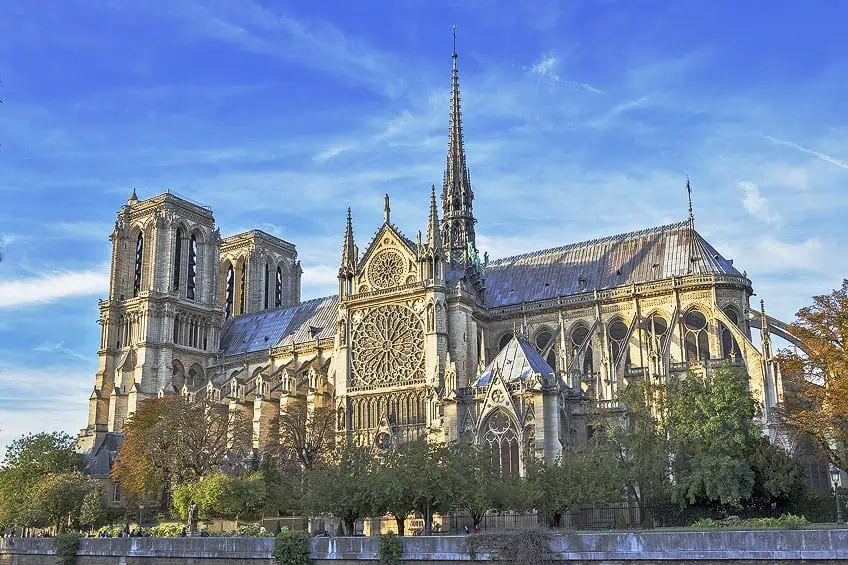Gothic Cathedrals – A Testament to Human Ingenuity
Gothic cathedrals have remained some of the most famous cathedrals in the world. The pointed style of these magnificent structures has contributed to their existence as some of the most stunning examples of religious architecture. In this article, we will look at five of the most important Gothic cathedrals and examine some of their characteristics and their history to see what makes them tick. So, keep reading to learn a lot more about Gothic cathedrals and architecture!
A Look at Gothic Cathedrals
Below, we will examine five different Gothic cathedrals in England and France as these were two of the locations that most readily adopted Gothic architecture. These five buildings are five of the most famous examples of Gothic churches, and we will examine their history and some of their characteristics. However, let’s first briefly discuss Gothic architecture itself.
Gothic architecture is known for its pointed or ogival arches, flying buttresses, and immense height.
Buildings that adopted this style were generally built with relatively thin walls and attempted to reach far higher into the sky than previous buildings had managed. Another major aspect of Gothic architecture, especially with regard to church design, was the use of stained glass. Stained-glass windows were used to produce far more light than had been used before, and this was adopted because of the desire for more light for ecclesiastical purposes.
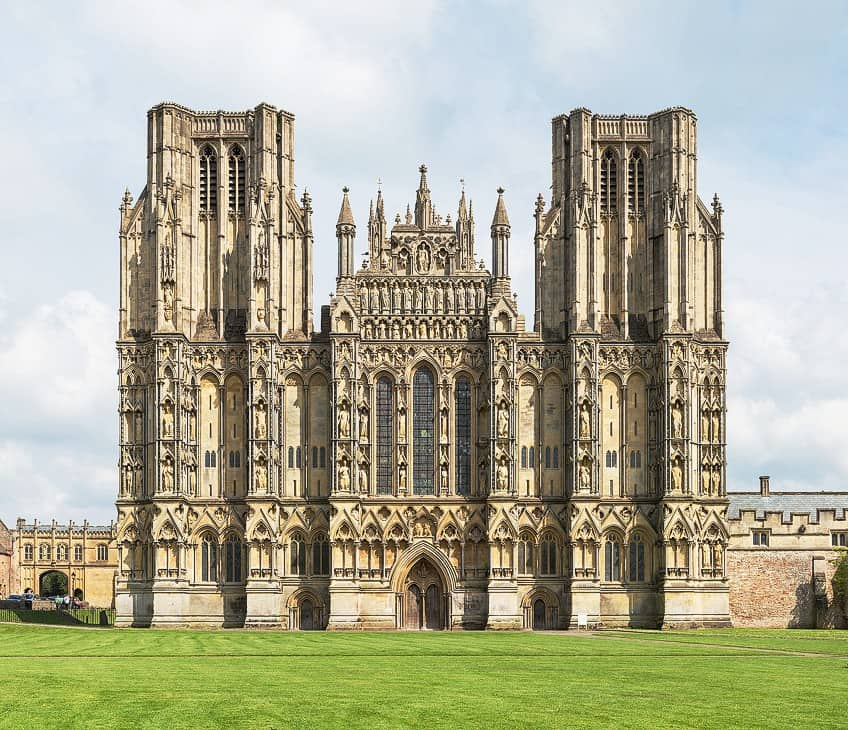
Lastly, it should be noted that Gothic architecture, as a part of medieval architecture, is an ancient form. This means that the architects who designed these structures were often not recorded or, because these buildings were often designed without a central plan, there would have been numerous architects over the course of the lengthy construction of these buildings.
So, there isn’t any mention of the architects who designed these Gothic churches in the list below. Speaking of that list, let’s get started with it.
Westminster Abbey (960 – 13th Century) in London
| Date Constructed | 960 – 13th Century |
| Materials Used | Marble, limestone, and sandstone |
| Location | London, United Kingdom |
Westminster Abbey is one of the most famous Gothic cathedrals in the world, and it could even be considered the most famous Gothic cathedral in the world. However, let’s set that aside for now and instead look at what makes this such a famous instance of Gothic architecture. The church has been in use for over a millennium, and ever since 1066, it has served as the location for British coronations. There have been 39 different coronations of British monarchs in the walls of this famous structure, and there have also been a minimum of 16 royal weddings.
This is the location of choice for, perhaps, the most famous living royal family in the world.
The origins of this structure, as well as several other Gothic churches, are shrouded in some level of mystery, and various origin myths have been posited. We know that there was an ancient church in this location, but it was only actually in 1245 that the construction of the present form started to take place. When the dissolution of many Catholic locations in the country started to occur, Westminster Abbey fell under that too, and instead became a church directly under the purview of the crown. It had switched from a Catholic to a Church of England structure.
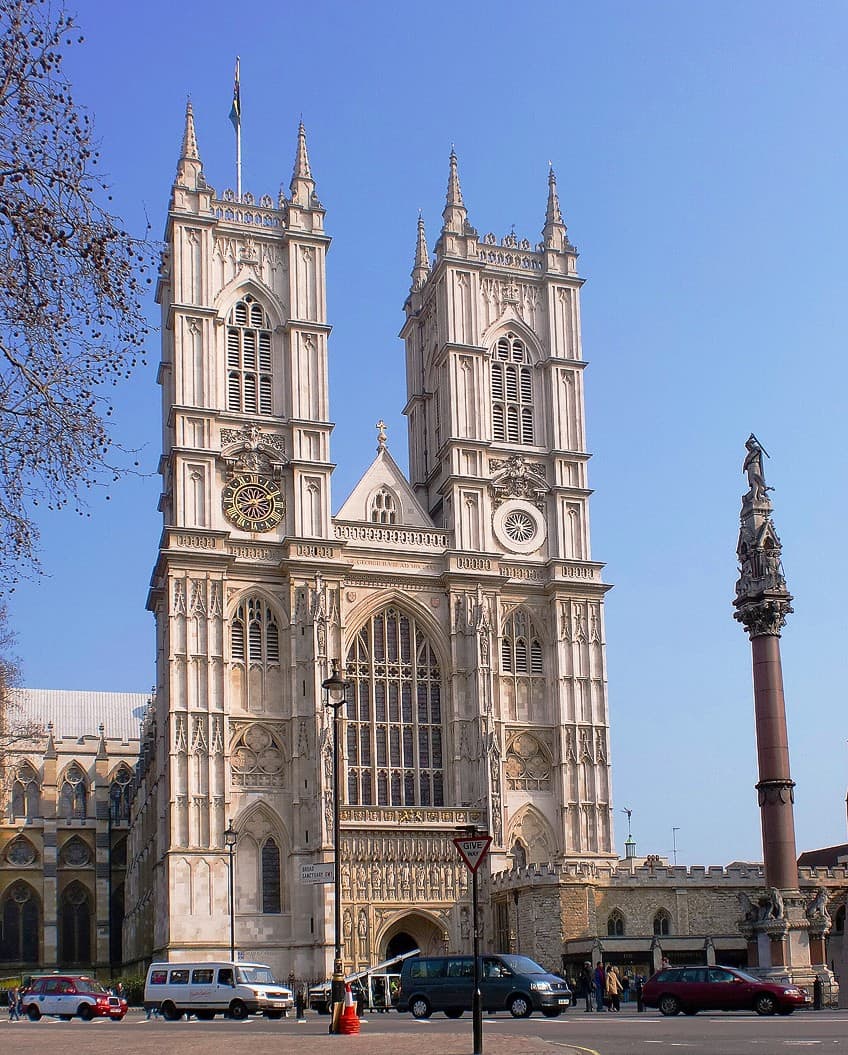
Another important part of Westminster Abbey is that it is also the burial site for many different immensely prominent British figures from all manner of fields and areas of interest. There are monarchs, artists, writers, and military leaders buried in the cemetery of the structure. It is also the location of the British version of the Unknown Warrior. The church itself makes use of Gothic church architecture that is predominantly inspired by the French style prominent at the time although there are some aspects of influence from both Romanesque and Baroque architectural traditions.
However, this famed Gothic church is predominantly known for making use of that style with its quadripartite roof vaults, high ceiling, two tiers of flying buttresses to accommodate the increased height, and a larger Gothic cathedral interior.
The work on the cathedral is not quite done though. There was actually an addition that came as late as 2018. This is the Weston Tower, and it was designed to allow the public to gain access to the triforium, which is a location that houses the Queen’s Diamond Jubilee Gallery. This structure is clearly still an important part of British cultural life seeing as it is still, to this day, subject to potential construction.
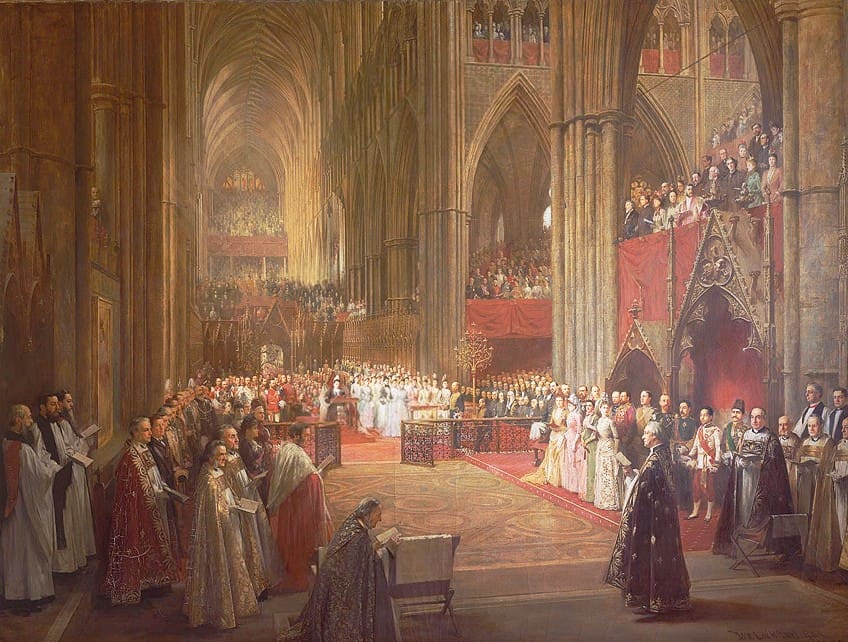
Lincoln Cathedral (1072 – 1311) in Lincoln
| Date Constructed | 1072 – 1311 |
| Materials Used | Limestone |
| Location | Lincoln, United Kingdom |
Lincoln Cathedral is an Anglican cathedral located in Lincoln in the United Kingdom, and it is an immensely old structure that is nearly a thousand years old at this point. It underwent an array of construction eras before it finally settled on its present form. It was also constructed using the Early Gothic architecture style. It contains many interesting features such as the carvings of imps on the exterior. These stone carvings depict demonic impish creatures that were supposedly sent down by the devil but were halted through the work of the angels that are also depicted in the many sculptures that adorn the walls. The Gothic cathedral interior of this famed church also contains two massive rose windows, experimental vaults, and an old clock tower that was added centuries after the structure was actually completed.
However, one of the most interesting possibilities about this building lies in the fact that it may have been the tallest building in the world for some time.
There was a central spire constructed in 1311, and it was supposedly 160 m (or 525 ft) tall, and if this is true, then Lincoln Cathedral was once the tallest building because of it. This means that it would have supplanted the Great Pyramid at Giza as the tallest building and would have held onto that for 238 years. The only reason Lincoln Cathedral lost its place as the tallest building in the world, provided this is true, is because the spire eventually collapsed in 1548. All of this is too far in the past to be definitively verified, but it would be an immensely interesting piece of architectural history if this was true. And if it was true, then Lincoln Cathedral would have been the tallest building in the world until the Washington Monument was created in 1884.
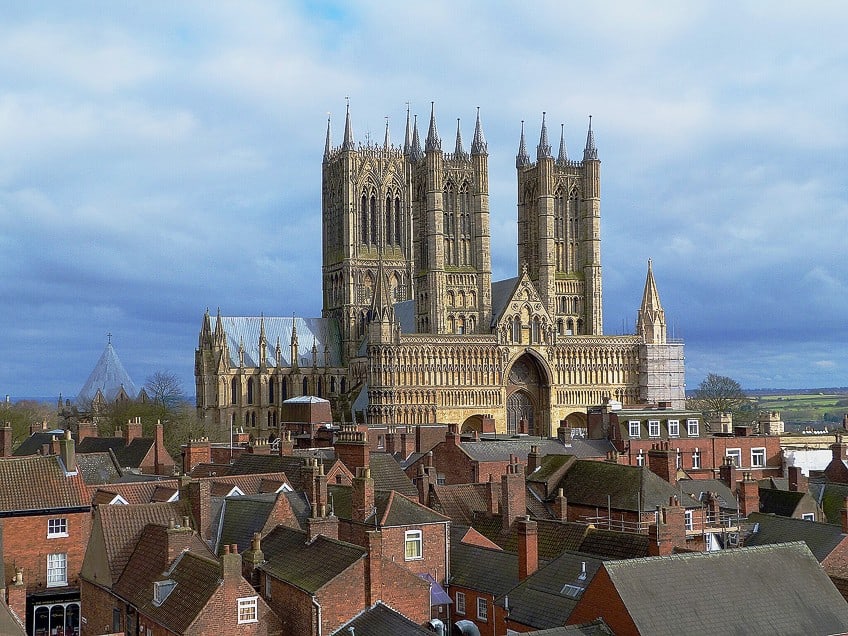
Another interesting fact about this classic of Gothic architecture was that it once stored one of the four original copies of the Magna Carta, the influential and highly important charter of rights that had been signed by King John of England in 1215. This important document remained in the church for a very long time but was eventually transitioned to Lincoln Castle where it is now on display for those who wish to see one of the most important legal documents in the history of the Western world.
Notre-Dame de Paris (1163 – 1345) in Paris
| Date Constructed | 1163 – 1345 |
| Materials Used | Limestone, iron, wood, and lead |
| Location | Paris, France |
Notre-Dame de Paris is one of the most famous Gothic churches in the world, and it may also be the most famous Gothic cathedral in the world, although this is something that can be debated. This incredibly important and influential instance of Gothic architecture has its name because it means Our Lady of Paris and is dedicated to the Virgin Mary. It is also somewhat confusing because the term “Notre-Dame” is actually used for many Catholic churches in France, but it is most associated with this particular church. This particular Notre-Dame may not actually be all that famous for many of the standard reasons that structures of this variety are famous. Instead, this structure may have achieved the vast majority of its fame because of a book. Notre-Dame is the famous setting for Victor Hugo’s classic text, The Hunchback of Notre-Dame.
In the modern day, most people are probably more familiar with the more child-friendly Disney adaptation of this influential text.
Victor Hugo championed this famous Gothic church for much of his life, and after the publication of his book in 1831, the renewed interest in this building led to extensive restoration efforts between 1844 and 1864. These restorations would transform the Notre-Dame de Paris into the structure that stands in Paris today. This restoration was also needed because the Notre-Dame de Paris was quite severely damaged during the French Revolution, as befell many churches during that period. However, that did not stop this location from being used as the coronation site for Napoleon I, and it would later serve as the funerary location for many of the French presidents that would follow. The fame of Notre-Dame could only increase thereafter until it became one of the primary landmarks of Paris. This is a prestigious position that it holds to this day.
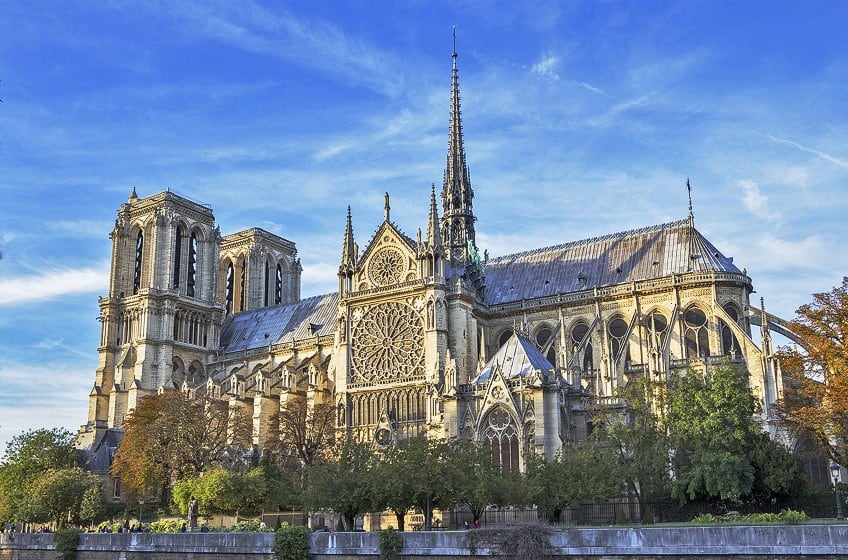
However, the Notre-Dame de Paris is not only an important location because of its usage as a historical site for coronations and funerals and as a setting by one of the most famous, if not the most famous, French writer to have ever lived, Victor Hugo. It is also notable for its Gothic church architecture. This building made use of some innovative techniques for its time, such as the use of flying buttresses and rib vaults, and it also contains massive rose windows, and an extensive array of sculptures that have turned it into an architectural and artistic marvel of the modern world.
The Gothic church architecture of this structure is evident in both the exterior and the interior of this most famous of Gothic churches.
It contains some of the most famous stained-glass windows in the world, and some of these are the three famed rose windows that adorn the walls of this church. However, the most famous architectural aspect of the Notre-Dame de Paris actually lies in the sculptures that surround it. The sculptures that surround the Notre-Dame are made up of a combination of different sources and purposes. There are many sculptures that detail narratives from the Bible so that illiterate churchgoers from ancient times would be able to engage with the narratives within the book that they worshiped. This was not an entirely unique thing, and many cathedrals made use of sculptures for this very purpose. The world before printing and public education was one in which the vast majority of people could not read, and if your religion is based on a book then you need to find a way to convey what’s in that book to the people.
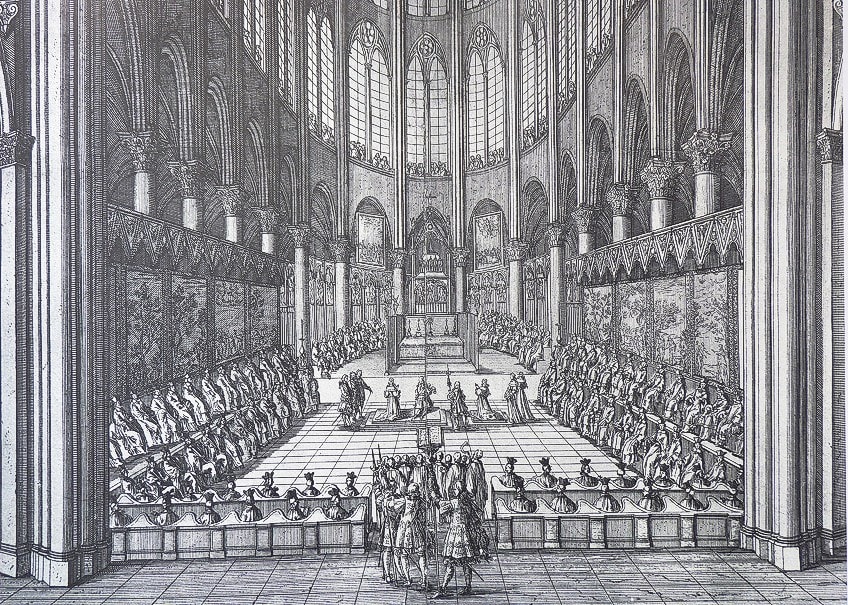
Other than these more biblical narrative-oriented sculptures, there are also many grotesques and other monsters that cover the walls. These have become an iconic sight and are also strongly associated with The Hunchback of Notre-Dame. These creatures guard the structure as monstrous forms, but there is a difference between a grotesque and a gargoyle. For those who don’t know, a gargoyle is a water spout and a grotesque is just a sculpture made to look like a monster of some sort. The most famous gargoyles are also grotesque monsters, but they aren’t actually “grotesques” in the technical sense of the term.
However, these gargoyles were added to the array of grotesques because they served a far more practical purpose as a drainage system to minimize water damage to the structure as a whole.
Regardless of why the many sculptures cover the walls of this famous Gothic church, the Notre-Dame de Paris has become one of the most famous sights to see in Paris and also one of the most famous Gothic cathedrals in the world. It is possibly the most famous of them all, but that’s up to everyone else to decide.
Chartres Cathedral (1194 – 1220) in Chartres
| Date Constructed | 1194 – 1220 |
| Materials Used | Limestone |
| Location | Chartres, France |
Chartres Cathedral is one of the most magnificent Gothic churches in the world, and not only because of the Gothic cathedral interior and exterior but also because of two major attributes that this cathedral has over every other cathedral. This particular church, while it is a gorgeous and immensely well-preserved example of High Gothic architecture, it also includes an important holy relic and a labyrinth within its walls. The Chartres Cathedral itself is actually only the latest in a rather long line of churches that have existed in that particular spot. There were at least five distinct churches that were situated in that same location, but each and every one of them had a bad brush with fire that led to the utter destruction of the site. So, a new one was repeatedly constructed atop the old.
The current cathedral is only the latest, but also the longest-lasting, of each of these different attempts at creating a permanent structure.
One of the most interesting architectural aspects of this particular building is that it is not entirely Gothic in its design. As was fairly common for many of these kinds of structures, they were built on top of the ruins of previous structures, but in this case, the latest structure was not a complete replacement of the previous one. There had been a Romanesque cathedral under construction when it caught on fire, so some parts of that earlier Romanesque building are still within the walls of the present Gothic church. So, these two styles, which do not go together all that well under general circumstances, have formed a strong unity of styles within this particular Gothic church. However, it should be noted that even though there is some Romanesque work in this structure, it is still mostly a Gothic building.
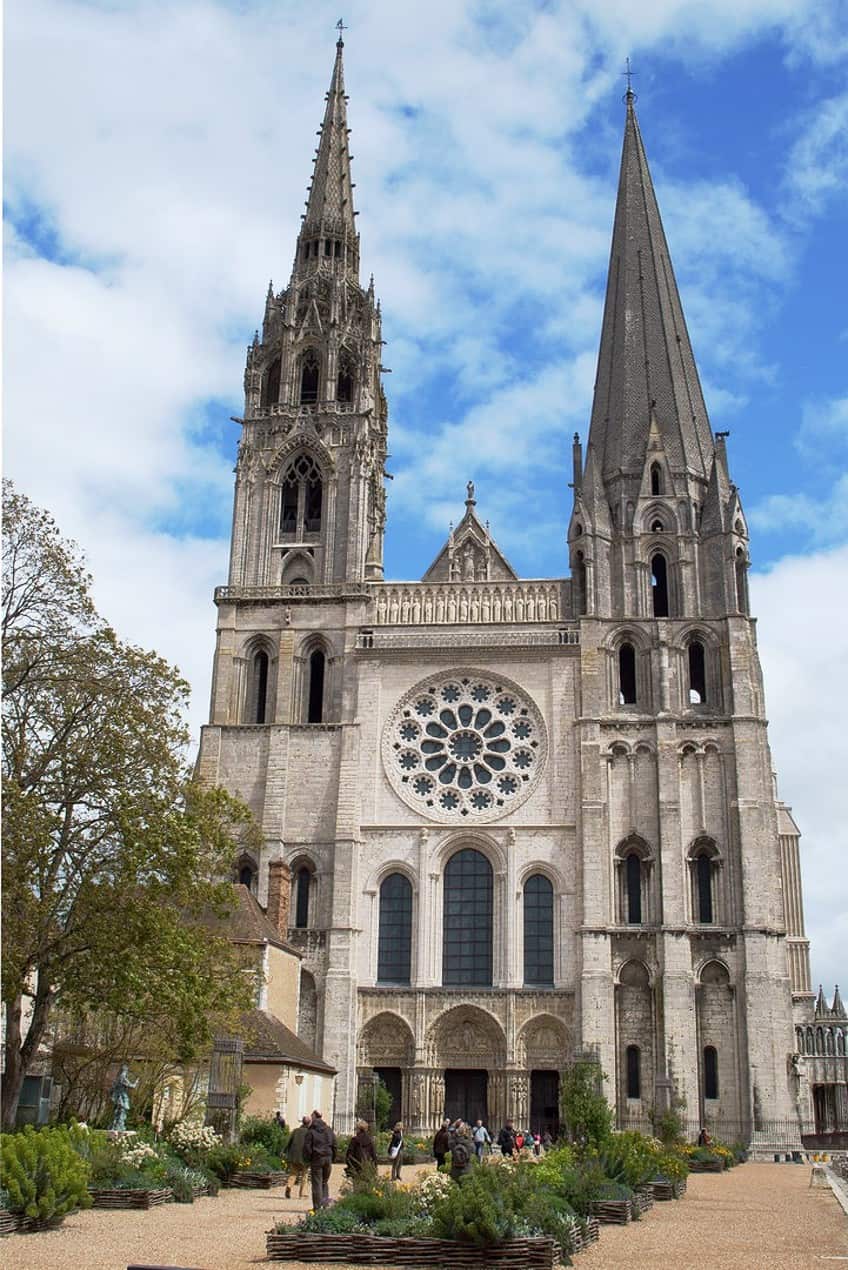
Chartres Cathedral is also remarkably well-preserved, and the vast majority of the stained-glass windows that adorn the structure are from the original design. Furthermore, the building has undergone very few structural changes since it was largely completed, and so the heavy use of flying buttresses, the enormous windows, and the two contrasting spires have remained as they have for centuries (although one of the spires is from the later Flamboyant style that would become prominent in the 14th-16th centuries).
Aside from the obvious architectural elements that are worthy of discussion, the Chartres Cathedral has also become a place of pilgrimage because it contains the Sancta Camisa or the Veil of Mary.
This was the supposed tunic that was worn by the Virgin Mary herself while she gave birth to Jesus Christ. The authenticity of relics like this is always something worth examining, but regardless of its authenticity, it has served as an important Catholic holy relic for centuries. This particular church has held onto this relic since the 12th century, and it even managed to survive some of the fires that have engulfed this cathedral on numerous occasions.
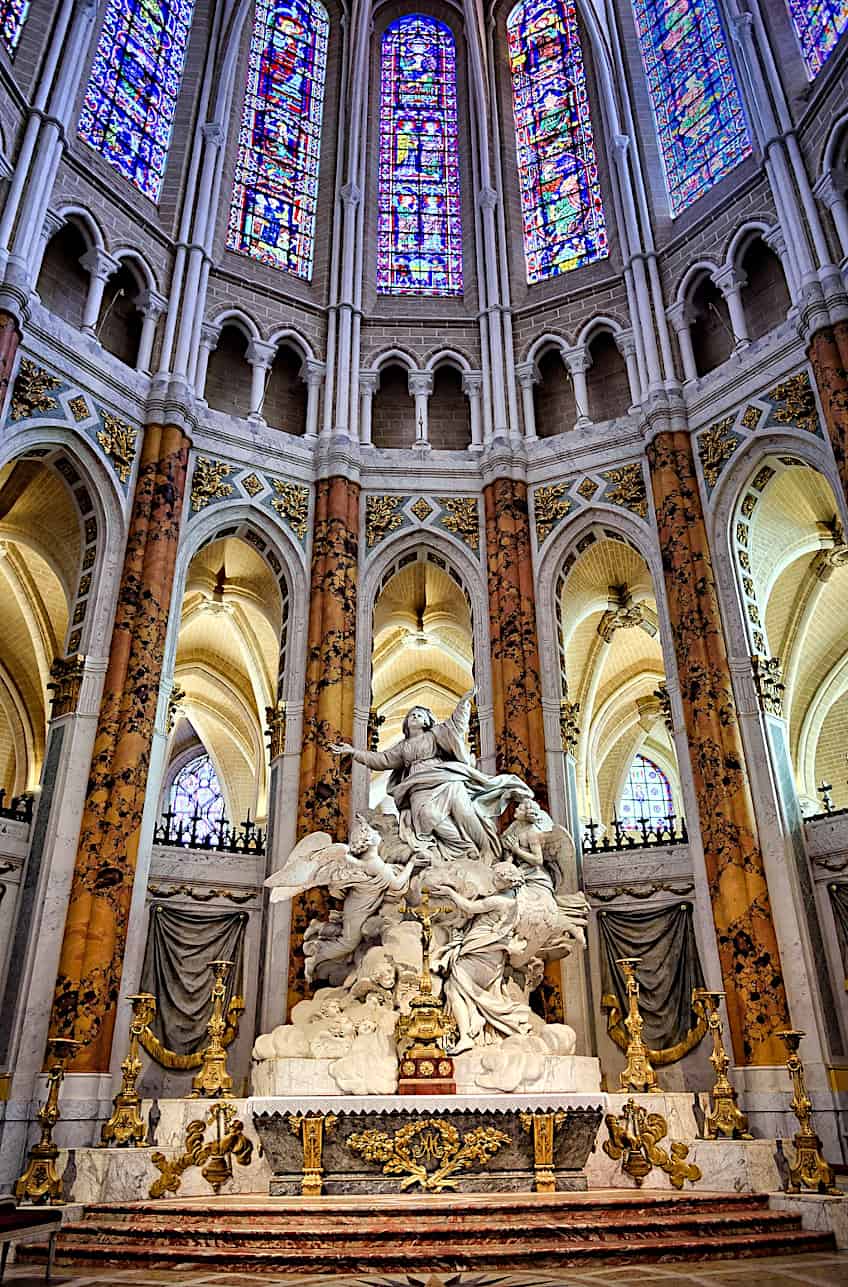
In addition to the holy relic, there is another important and very interesting feature that the Chartres Cathedral possesses. This particular thing is an architectural feature, but its actual history is somewhat shrouded in mystery. There is a large labyrinth within this Gothic cathedral interior, and it has been used by many believers as a location for meditative walking. It is generally obscured beneath chairs, as the church is still in use as a place of worship, but the labyrinth is open every Friday for those who wish to walk it. It’s an interesting architectural feature that has probably remained as the most famous example of its kind.
It is not the most ornate of its kind, but it is likely the most well-known.
Reims Cathedral (1211 – 1345)
| Date Constructed | 1211 – 1345 |
| Materials Used | Limestone |
| Location | Reims, France |
Reims Cathedral is one of the most historically significant Gothic cathedrals in the world because of its central place as the location for the coronation of the Kings of France. The first king to be baptized in this cathedral was Clovis I, who was baptized in 496 CE, and he would start this long-running tradition that remained for centuries. The correct name for this structure is the Notre-Dame de Reims as it is a church dedicated to the Virgin Mary within Reims, but the term “Notre-Dame” has been somewhat overtaken by the Notre-Dame in Paris. So, we will refer to this one as Reims Cathedral instead.
This cathedral underwent a variety of iterations. For instance, it was a Merovingian cathedral in the 5th century, but became a Carolingian cathedral in the 9th century, and would only enter into the Gothic period in the 12th century.
However, its earliest Gothic origins were in the Early Gothic era, and it would ultimately be adapted into the High Gothic style between the 13th and 14th centuries. Basically, this cathedral has been extensively reworked on numerous occasions throughout its existence. The west façade of this cathedral is used as a means of glorifying the royals, which is understandable given its place as the site of coronation for so many of those royals, and it also includes numerous sculptures for illiterate members of the congregation (in a similar sense to the abovementioned Notre-Dame de Paris).
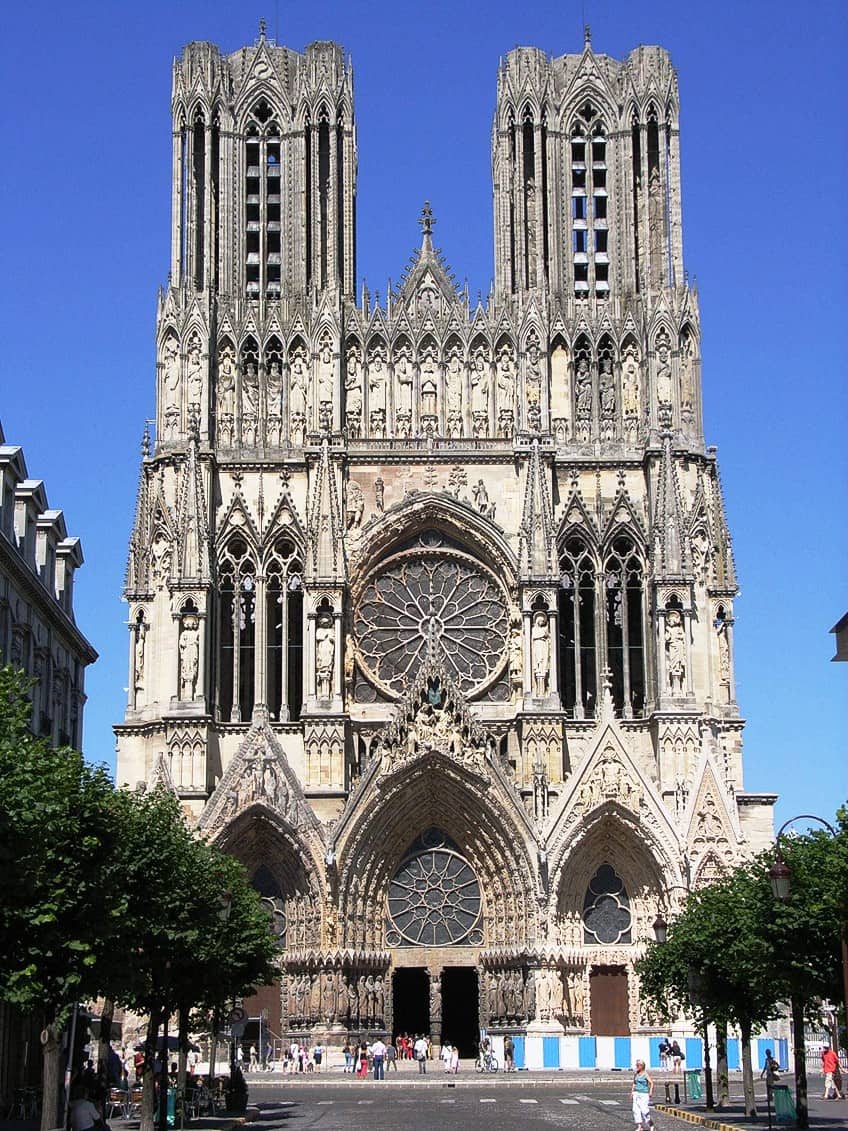
The north and south walls also make use of 22 flying buttresses that allow for the structure to be far taller than it would otherwise have been able to be, and the numerous stained-glass windows have managed to survive through the centuries and into the present. While Reims Cathedral does not hold the important place it once held within French society as the location for the crowning of royalty, it is still one of the best-preserved examples of Gothic cathedrals and architecture in general. It is a gorgeous site that has retained its original form, for the most part, through the ages to become one of the most important Gothic churches in the world.
We have come to the end of our discussion about Gothic cathedrals. We have examined five of the most famous Gothic churches in Europe and discussed their history and general characteristics. So, hopefully, you have learned a few things about Gothic architecture and the cathedrals that often epitomize this architectural era. Otherwise, have a great day/week/month ahead!
Frequently Asked Questions
What Is a Cathedral?
A cathedral is a name used to describe a Christian church that contains a cathedra. This is a Latin term that refers to the seat of a bishop. Therefore, a cathedral is a type of Christian church that makes use of an episcopal hierarchy, such as Catholic, Anglican, and Eastern Orthodox churches. Protestant churches do not generally entail a hierarchy of this variety, and so there are no churches that are deemed any more or less important than any other from a religious perspective. Hence these denominations do not have cathedrals.
When Was the Gothic Period?
The Gothic period, which marked the origins of Gothic architecture and art, is a medieval period that existed between the late-12th and the 16th centuries. It did manage to survive in some form until the 17th and 18th centuries in some places, but was never as prominent as it once was when it occupied much of Europe. It would give way to Renaissance architecture. However, there have been Neo-Gothic Revivals in more recent centuries, but these have not reached the same magnitude as the original Gothic structures from the medieval era.
What Is the Most Famous Gothic Cathedral?
Fame is a difficult thing to judge. Westminster Abbey may be the most famous Gothic cathedral, but that honor may also go to the Notre-Dame de Paris. Both of these structures are two of the most famous Gothic cathedrals in the world, but the Notre-Dame may be slightly more famous because of its pop cultural existence within Victor Hugo’s The Hunchback of Notre-Dame and the Disney adaptation that is, arguably, more famous in the modern day than the book it is based on.
Justin van Huyssteen is a writer, academic, and educator from Cape Town, South Africa. He holds a master’s degree in Theory of Literature. His primary focus in this field is the analysis of artistic objects through a number of theoretical lenses. His predominant theoretical areas of interest include narratology and critical theory in general, with a particular focus on animal studies. Other than academia, he is a novelist, game reviewer, and freelance writer. Justin’s preferred architectural movements include the more modern and postmodern types of architecture, such as Bauhaus, Art Nouveau, Art Deco, Brutalist, and Futurist varieties like sustainable architecture. Justin is working for artfilemagazine as an author and content writer since 2022. He is responsible for all blog posts about architecture.
Learn more about Justin van Huyssteen and about us.
Cite this Article
Justin, van Huyssteen, “Gothic Cathedrals – A Testament to Human Ingenuity.” artfilemagazine – Your Online Art Source. October 27, 2023. URL: https://artfilemagazine.com/gothic-cathedrals/
van Huyssteen, J. (2023, 27 October). Gothic Cathedrals – A Testament to Human Ingenuity. artfilemagazine – Your Online Art Source. https://artfilemagazine.com/gothic-cathedrals/
van Huyssteen, Justin. “Gothic Cathedrals – A Testament to Human Ingenuity.” artfilemagazine – Your Online Art Source, October 27, 2023. https://artfilemagazine.com/gothic-cathedrals/.


